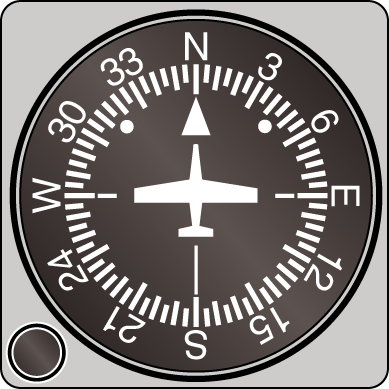Today’s post on flight instruments is an excerpt from the new fourth edition of The Pilot’s Manual: Ground School (PM-2).
The magnetic compass is the primary indicator of direction in most airplanes. It is, however, difficult to read in turbulence and subject to acceleration and turning errors, making it a difficult instrument to fly by accurately. The heading indicator (HI) is a gyroscopic instrument that you should keep aligned with the magnetic compass in flight. Although it takes its directional reference from the compass, it is not subject to the same acceleration and turning errors. This makes accurate turns and a constant heading possible.

There are mechanical factors present in the HI (mainly friction) that will cause it to drift off its original alignment with magnetic north because of gyroscopic precession. This is called mechanical drift. In addition, because the airplane is flying over a rotating earth, a line in space from the airplane to north will steadily change. This causes apparent drift. Both mechanical and apparent drift can be corrected by simply realigning the HI with the magnetic compass periodically, as described below.
You should check the power source of the HI prior to flight and, when taxiing, check the correct turn indications on the HI (“turning right, heading increases—turning left, heading decreases”). The HI has a slaving knob that enables the pilot to realign the HI with the magnetic compass, correcting for both mechanical drift and apparent drift. This should be done every 10 or 15 minutes. Some older heading indicators have to be uncaged after realigning with the magnetic compass. Advanced airplanes have HI gyros that are aligned automatically.
To manually align the heading indicator with the magnetic compass:
- choose a reference point directly ahead of the airplane, aim for it and fly steadily straight-and-level;
- keep the nose precisely on the reference point, and then read the magnetic compass heading (when the compass is steady);
- maintain the airplane’s heading toward the reference point and then refer to the HI, adjusting its reading (if necessary) to that taken from the magnetic compass; and
- check that the airplane has remained steadily heading toward the reference point during the operation (if not, repeat the procedure).




